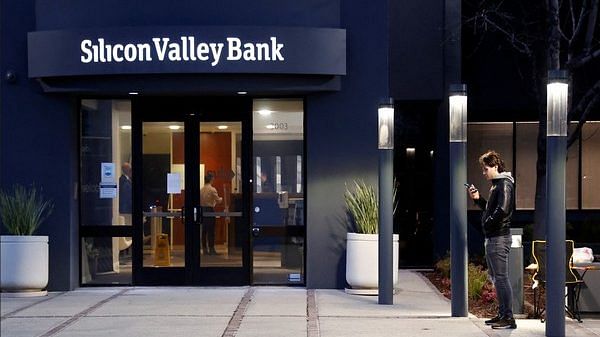The banking sector in the developed world seems to be under severe stress. On 10 March Friday – luckily not Friday the 13th – the Silicon Valley Bank which served the venture capital business for nearly forty years through its 17 branches, $200 billion in total assets, $180 billion in total deposits, and $70 billion in loans, was closed by California regulators, who immediately appointed the Federal Deposit Insurance Corporation as receiver.
The high-profile Silicon Valley Bank (SVB) going belly up has brought back the nightmares of the 2008-09 global economic meltdown.
The financial bankruptcy of Lehman Brothers brought upon the worst financial crisis. What was essentially the failure of one bank in the US became a global crisis, drawing (majority of) the global financial architecture into the vortex of doom. While the 2008-09 bank failure and the resultant global economic crisis was more of an economic problem, the present bank bust seems to be resulting in greater political ramifications domestically for the US. Some of the supporters of Joe Biden’s Democrat lobby have already begun accusing Republican Donald Trump backers of triggering huge withdrawals to create ‘bank run’ (panic withdrawals) among depositors.
The lack of global economic ramification of the SVB’s failure points to the declining economic clout of the US financial system. Many countries, India included, are increasingly turning to bilateral currency trade instead of dollar as a referring point. The dollar still is powerful but somehow seems to be losing its sheen.
In one day, the SVB registered a withdrawal of about 42 billion dollars. Going by the ratio of the number of transactions to the amount withdrawn (1:10–roughly ten individuals withdrawing the entire amount), it appears to be a calculated attempt to sink the bank. No bank can handle such a huge cash outflow in a short time of a few hours. According to available statistics for the banking system in the US as a whole, banks hold about $75 billion in their vaults at any moment, which translates to about $230 for each US resident. This doesn’t seem too assuring as many Americans could be having much more than $230 in their account at any given time.
Incidentally, the CEO Gregory Becker has reportedly fled with his wife to Hawaii in a first-class flight days after being fired from his post. He owns a $3 million townhouse there.
Also read: SVB fall shows it’s not just about credit risk. It’s also about the silent role of interest rate
Lessons again for nations like India
The US Federal Deposit Insurance Corporation (FDIC) insures deposits only up to $250,000. The bailout creates incentives for risky behaviour, encouraging big ticket depositors to be reckless with their deposits without doing sufficient due diligence. SVB had been advocating less stringent risk limits arguing that its failure would not create ‘systemic’ risk. Immediately after the SVB went belly up, the US Treasury treated SVB as “systemically important.”
The Indian banking system has lesser depositors’ insurance but has built-in mechanisms to protect small deposits. The RBI steps in and facilitates swift bailout of failing banks through takeover by a stronger bank. Yet the question remains whether depositors should suffer due to the faulty judgement of the bank’s board.
Considering the risks involved in the banking industry, the RBI has to adopt a continuous monitoring system to not only protect the investors but also prevent interventions to the seamless economic progress. In this regard, the RBI could expedite the implementation and strict compliance of Audit System (IND AS) provisions for Indian banks. While the SVB failure is not expected to affect Indian startups and tech companies, the government needs to keep hawk’s eye on the fallout for some time.
The 2008-09 banking crisis provided valuable lessons to India and other emerging economies to learn from the mistakes of the developed world and institute remedial measures. India, as well as many other emerging economies, swiftly went back to their respective drawing boards and tweaked the banking system to make it strong enough to withstand another such crisis. The credit policies were tweaked to prevent excessive debt creation and lender-investor asymmetry.
The SVB crisis is yet another financial challenge to the banking system. One important lesson here is to insulate national banking systems from crises afflicting developed economies. The global banking, currency and financial services are so closely, rather dangerously, interconnected that a local problem becomes a global one in just a few clicks of the keyboard.
It is therefore an urgent need for India and the global south to reframe the banking laws and weave a protective web around the existing ones so as to gain time to calibrate an appropriate response mechanism to meet the challenges of such failures.
Taking a broader view, New Delhi could also bring up this issue in the meeting of G20 finance ministers and evolve a G20 banking framework to insulate emerging economies of the South from banking frauds committed by the developed North.
Seshadri Chari is the former editor of ‘Organiser’. He tweets @seshadrichari. Views are personal.
(Edited by Prashant)



